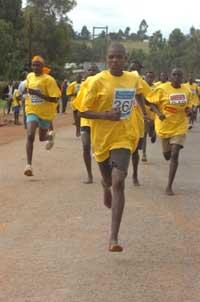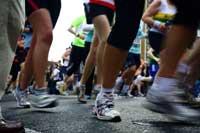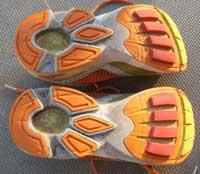We are born to run barefoot

And, curiously, we run barefoot and with different footwear. Researchers at Harvard University have analyzed the runs of several barefoot runners and footwear and have reported this study in the journal Nature. Among other things, they have said that running barefoot better relieves the impact of our feet on the ground.
It seems that the key to all this is that when we run we do not place our feet the same when we are barefoot on the ground and when we have the footwear. According to researchers, the first part of the body that hits the ground when we have shoes is the heel. When we run barefoot, we place the front of the feet or the entire sole against the ground.
How we place our feet, our feet will have an impact on each step. Logically, if they touch directly against the earth, it is they who bear the shock of each step. Well, researchers have seen that the strength of these shocks can triple the weight of the body, although the shoes have shock absorbers.
For those who run barefoot, the impact of the heels is reduced to 60% of the body weight. This is because the first contact with the soil occurs with the pads of the feet and, in addition, the joints, tendons and muscles of the lower part of the feet and legs have the possibility to cushion the impact.

In the so-called developed countries, the custom of walking barefoot and running (Photo: Mark Steele).
For example, the ankle is very adaptable and has a flexible joint. Thanks to this flexibility, the weight of the body greatly relieves the force it exerts against the earth. But this capacity can be used by barefoot runners. Those who go with shoes, only the sole of the footwear relieves the impact.
You can not suddenly start barefoot
If your feet are less impactful, it's logical to think barefoot will have fewer pains and injuries. And so have Harvard researchers suggested. But that said, all these advantages only have those who are accustomed to running barefoot, that is, with feet reinforced and hardened.
In the so-called developed countries, the habit of walking barefoot is very small. Most of the time we walk with footwear that protects our feet from pieces of glass, pointed stones, hard surfaces, etc.

Those who go with shoes only feel the impact of the shoe sole and not the cushions and joints of the feet (Photo: Morten Liebach).
However, if taking into account these good aspects of running barefoot someone decided to start barefoot, he knows that he should be adapting gradually. One of the researchers recognizes that he has already begun to make this adaptation.
The truth is that it is not the first time you talk about this issue. Through online search, thousands of websites collect research, advice and observations, and often refer to this progressive adaptation. For example, an article written by an Australian in 2001 in the journal Sportscience stated that the first step could be to start walking barefoot. Once the treads are hardened, in 3-4 weeks we would be able to run.
Published in 7K.
Buletina
Bidali zure helbide elektronikoa eta jaso asteroko buletina zure sarrera-ontzian











